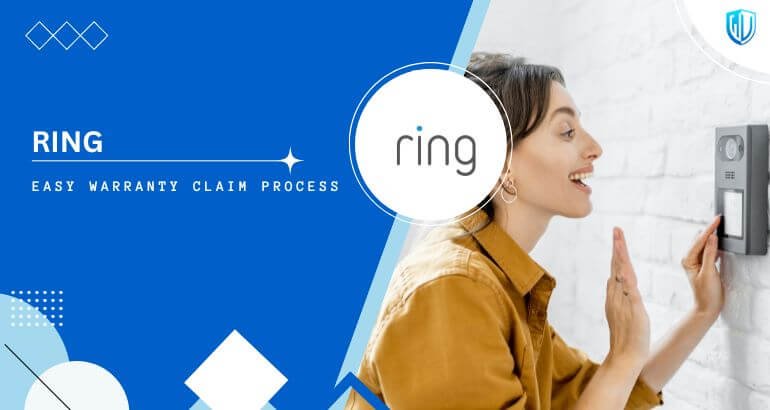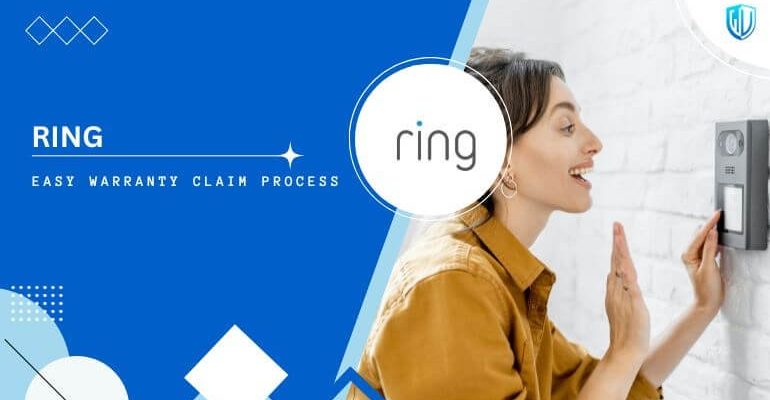
Let me break it down for you the way a friend would. Claiming a warranty on your Ring security system doesn’t have to be a headache. Think of it as following a recipe—there are a few steps you need to take, and if you’ve got the right ingredients (like your proof of purchase and product details), you’ll be back to feeling secure in no time. Ring, as a brand, is generally responsive and wants to keep you as a happy customer; they’re pretty good at troubleshooting, replacing, or repairing their tech—if you know what to do and where to start.
What Does the Ring Warranty Cover?
Before you dive into the warranty claim process, it helps to understand what’s actually covered. Here’s the thing: Ring’s standard warranty is surprisingly straightforward, but there are a few details you’ll want to remember. Most Ring devices—whether it’s a video doorbell, alarm sensor, or their famous floodlight camera—come with a one-year limited warranty from the date you bought it.
This warranty typically covers:
- Manufacturing defects
- Faulty materials or workmanship
- Malfunctions that aren’t your fault
It does not cover accidental damage (like dropping your device), normal wear and tear, batteries wearing out, or if you’ve tried to tinker with the internal code or hardware. One way to think about it: if you installed and used the device according to the instructions, and it stopped working on its own, you’re likely covered. But if you tried to reset or sync it using an off-brand charger and things went sideways, the warranty probably won’t help. Always check your user manual or the official Ring warranty page for the latest, most accurate details—sometimes policy specifics change or can vary by region.
Getting Ready: What You Need Before Starting a Claim
I know, paperwork sounds boring, but a little prep up front can save a ton of time and headaches. To claim a warranty with Ring, you’ll need a few key things on hand. Gathering this info is like packing your bag before a big trip: you really don’t want to realize you forgot your passport at the airport, right?
Here’s what you’ll want:
- Your Ring device’s serial number—usually found on the back or bottom of the device, or in the Ring app under Device Settings.
- Proof of purchase—an emailed receipt, order confirmation, or even a photo of a paper receipt works.
- Details about the issue you’re having—write down exactly what’s wrong, when it started, and anything you’ve already tried (like a reset, code update, or battery check).
- Your Ring account information—the email address you use to log in.
If you bought your Ring device from a third-party or retailer (like Amazon, Best Buy, etc.), make sure your receipt shows the purchase date and where you bought it—Ring usually asks for this!
Having all this ready means you’ll breeze through the claim process with fewer delays. Honestly, it’s the
How To Contact Ring Support For A Warranty Claim
Alright—now the actual claiming part. You might be wondering: do I fill out a form? Send an email? Call someone? The answer is: you’ve got options, and they’re all pretty simple.
Most people start their Ring warranty claim by:
- Visiting the official Ring support page.
- Using the live chat feature for quick help online.
- Calling the Ring support phone number listed on their website (they have lines for the US, UK, and other regions).
- Submitting a claim through the Ring app under Device Support.
During your chat or call, a support agent will ask for your device details, what’s wrong, when it started, and any troubleshooting steps you’ve already tried (like pairing, resetting, or syncing the device again). Here’s the thing: Ring support is pretty friendly, but they’ll almost always walk you through a few more troubleshooting steps—even if you think you’ve tried everything with your remote or battery. Don’t get frustrated; it’s just part of their process.
Most people find that live chat is the fastest route, while calling is best if you want to talk through more complex issues—like repeated failures after multiple resets or code errors.
Common Troubleshooting Steps Ring Will Ask You To Try
Let’s set expectations: even if you’re sure your device is toast, Ring almost always asks you to walk through standard troubleshooting steps before approving a warranty. You might feel like you’re repeating yourself, but it helps them rule out simple problems, especially with things like wireless pairing, code updates, or battery replacement.
Here’s what they often ask:
- Have you tried a “hard reset” of your device? (Usually holding down a button for 15 seconds.)
- Have you checked or replaced the batteries?
- Have you tried syncing or pairing the device again in the app?
- Is your Wi-Fi working properly?
- Have you updated the Ring app—sometimes the fix is just a quick update.
They might also ask you to snap a picture or video showing the error—this helps them understand if the problem is with the code (like a glitchy firmware update) or something physical (like a cracked lens). Don’t be afraid to ask questions back, either; the support team is there to help, not judge your tech skills.
Even if these fixes seem obvious or you’ve tried them already, doing them again with support on the line can speed up your warranty claim.
What Happens After Your Warranty Claim Is Approved?
So, let’s say you’ve made your claim, walked through troubleshooting, and Ring agrees the device isn’t working as it should under warranty. Now what? Here’s where the process usually goes next:
Typical outcomes:
- Ring sends you a replacement device for free, usually the same model or an equivalent.
- Sometimes they ask you to send the faulty device back—Ring will provide a pre-paid shipping label.
- In rare cases, they may issue a refund, especially if your model is discontinued or out of stock.
The shipping part is pretty painless—Ring emails you a prepaid label, you pack up the device in any sturdy box, and drop it off at your local carrier. You don’t usually need the original packaging (though it helps), just make sure you include all the parts (remotes, cables, etc.) that came with your kit. If you have a battery-powered device, they’ll guide you on safe shipping for lithium-ion batteries, too.
Once Ring receives your old device (if they ask for it), they’ll ship the new one out quickly—most people get their replacement in about a week. Honestly, they’re a lot faster than some other tech brands.
Ring Protect Plus and Extended Warranty Options
You might be wondering: what if my Ring device is more than a year old, or I’ve got several Ring cameras and alarms? That’s where Ring’s Protect Plus plan comes in. This is a subscription bundle you can buy, and it covers unlimited devices at a single address with a longer warranty.
Ring Protect Plus extends your warranty for as long as you keep the plan active—think of it like “warranty on tap.”
If you’re already a Protect Plus subscriber, all of your eligible Ring devices are covered with an extended warranty—so you don’t have to worry about the standard one-year limit. If you started the plan after you bought your device, your warranty is still extended from that point on. Some people think of this as “paying for peace of mind,” especially if you’ve got several cameras, sensors, or smart lighting all synced up in your home security system.
Compared to other brands, Ring’s approach is genuinely customer-friendly. Just be sure to keep your Protect Plus subscription active—if you cancel, the warranty ends with it, even if you sign up again later.
What If Your Warranty Claim Is Denied?
It doesn’t happen often, but sometimes Ring will reject a warranty claim. Maybe the device is out of warranty, there’s clear accidental damage (cracked lens, water inside from improper installation), or you’re missing proof of purchase. It’s disappointing, but not the end of the world.
Here’s what you can do next:
- See if your credit card offers purchase protection—it’s a long shot, but worth checking.
- Look into third-party tech repair shops for out-of-warranty fixes (especially for batteries, remotes, or basic resets).
- Consider buying a refurbished Ring device at a discount—Ring sometimes offers these as replacements.
- Check if Ring has any special programs or discounts for upgrading older hardware.
Don’t be afraid to ask support if there’s anything they can do—they sometimes offer loyalty discounts or alternatives, especially if it’s a gray-area claim.
Honestly, there’s always a way forward, even if it’s not a free replacement.
Tips For A Smooth and Successful Warranty Claim
Let me share a few practical tips—think of these as “pro moves” to make your warranty claim as painless as possible.
- Keep your receipts and device packaging—snap a photo and email it to yourself for easy access later.
- Register your Ring device right away in the app; this saves time when you need support.
- Don’t wait if something goes wrong—report issues as soon as you notice them, before your warranty expires.
- Be polite and clear with support; agents can sometimes bend the rules for friendly, patient customers.
- Document your troubleshooting steps—even a messy note on your phone helps build your case if things go wrong.
It might sound obvious, but clear communication is your best friend here. The more detail you provide, the quicker the process usually goes.
“The squeaky wheel gets the grease”—if you feel stuck, follow up politely. Persistence pays off.
Wrapping Up: Keeping Your Ring System Protected
So, that’s the real-world process for how to claim a warranty for your Ring security systems. It’s not as intimidating as it looks—especially if you’re prepared, keep your paperwork handy, and know how to work with customer support. Whether your device won’t sync, won’t reset, or just refuses to power on no matter how many times you swap batteries, Ring’s warranty system is designed to keep you protected without endless hoops to jump through.
Like any smart home gear, staying organized is half the battle. With the right steps, you can get back to feeling secure in your home—knowing your Ring system will either be fixed or replaced if something goes wrong. And honestly, that kind of peace of mind is what these warranties are all about.
